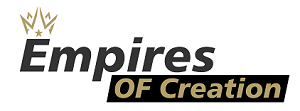Competitive crossword solving draws remarkably talented individuals. These events gather people demonstrating exceptional vocabulary, pattern recognition, and mental processing speed. The competition appeal reveals why brilliant minds find crosswords compelling. Tournament environments test abilities beyond casual solving, pushing participants toward excellence. Diverse puzzle resources train competitors effectively pitaronfree.blogspot.com offers practice materials helping develop competitive skills. Hebrew language competitors particularly benefit from specialized resources.
Accessing מורדו תשבצים provides extensive Hebrew crossword collections, enabling language-specific practice essential for native speakers pursuing competitive excellence. These platforms support skill development across multiple languages, difficulty levels, and construction styles. Competitions attract sharp thinkers because they reward quick thinking, vast knowledge, and strategic problem-solving simultaneously. Various factors explain the competitive crossword’s appeal among intellectually gifted populations.
Multidimensional cognitive challenge
Crosswords demand simultaneous linguistic, logical, and memory skills. Competitors excel across multiple intelligence dimensions single specialities. Vocabulary breadth matters enormously. Knowing obscure words, various definitions, and etymology all provide competitive advantages. This linguistic knowledge must be instantly accessible under time pressure. Pattern recognition speeds solving dramatically. Experienced solvers identify common fill patterns, constructor tendencies, and grid design logic quickly.
This meta-knowledge separates elite competitors from casual solvers. Working memory capacity determines crossing utilization. Remembering partial answers while solving other clues creates cascading solutions. Superior working memory enables holding more information simultaneously. Processing speed differentiates top performers. Reading clues, accessing knowledge, and writing answers all must happen rapidly. Competitors finish puzzles in minutes that take others hours.
Competitive intensity appeal
Timed pressure creates exhilarating focus states. Racing against clocks generates adrenaline, heightened concentration, and peak performance conditions. Head-to-head competition adds social dimensions. Competing directly against others creates excitement beyond solitary solving. This interpersonal element appeals to social personalities.
- National championships attract hundreds of skilled competitors annually
- Regional tournaments provide local competitive opportunities without travel
- Online competitions enable global participation from home
- Speed-solving brackets create tournament-style elimination formats
- Team events add collaborative elements to individual skill demonstrations
Winning validates abilities publicly. Tournament victories prove solving prowess objectively versus subjective self-assessment. Rankings quantify skill levels precisely. Leaderboards show exactly where competitors stand relative to peers. This objective measurement appeals to achievement-oriented personalities.
Intellectual community connection
Crossword competitions gather remarkably educated, articulate, witty people. The social environment attracts those who enjoy intellectual camaraderie, wordplay appreciation, and puzzle enthusiasm. Shared passion creates instant connection. Competitors bond over solving experiences, favourite constructors, and memorable clues. These relationships extend beyond tournaments through ongoing friendships. Constructor interactions happen at events. Meeting puzzle creators adds depth to solving experiences. Workshops, panels, and discussions enrich competition experiences. Learning directly from experts accelerates skill development beyond independent practice alone. Social events surrounding competitions create relaxed networking. Evening gatherings, group dinners, and puzzle sessions all build community beyond formal competition.
Strategic depth exploration
Advanced solving requires strategic thinking beyond straightforward clue interpretation. Grid analysis precedes actual solving. Identifying likely starting points, spotting theme patterns, and recognizing unusual fill all inform strategic approaches. Clue prioritization optimizes solving order. Starting with confident answers, returning to difficult clues later maximizes completion rates under time constraints.
- Crossing verification catches errors early, preventing cascading mistakes
- Pencil-first approaches allow easy correction versus permanent ink
- Theme identification unlocks multiple answers simultaneously
- Constructor style recognition predicts likely answer patterns
- Skip-and-return strategies prevent stuck on single clues
Strategic sophistication develops through experience, study, and mentorship from competitors. These elements combine to create environments where brilliant minds test abilities, connect with peers, and pursue excellence through sophisticated puzzle solving. Appeal helps appreciate why competitions draw remarkably talented individuals seeking intellectual challenge, social connection, and continuous improvement.
